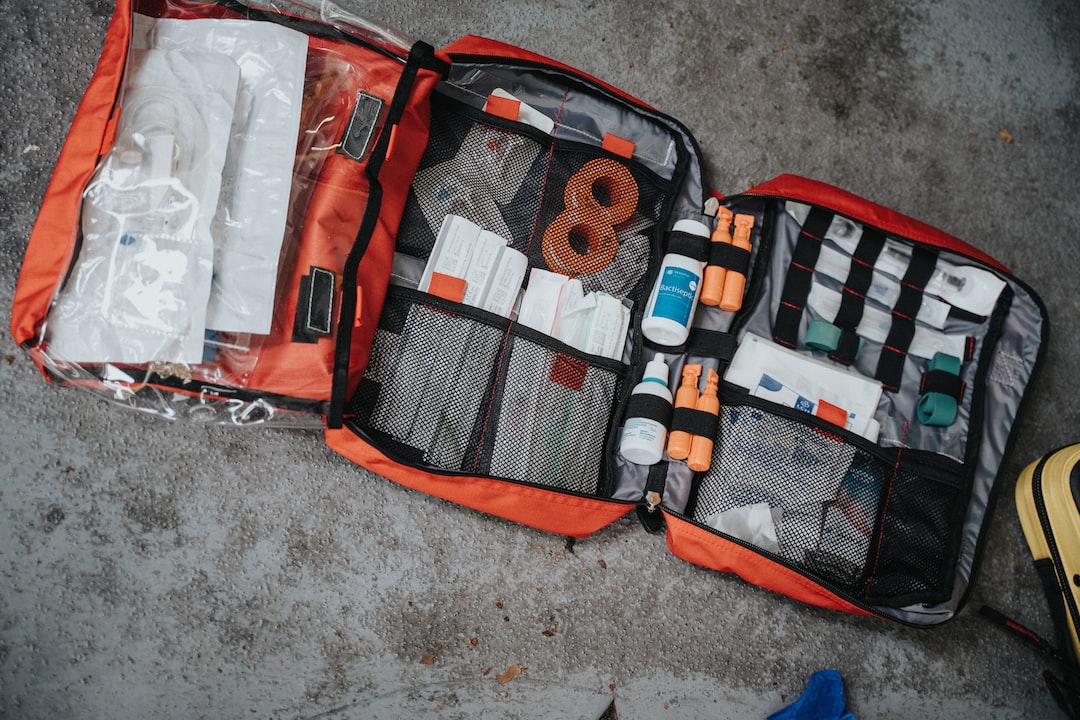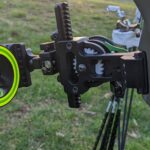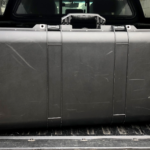Having a first aid kit prepared for any eventuality is an essential part of hunting safety.
Even the most experienced hunters can find themselves in unexpected situations that require medical attention. Having the right knowledge on hand, such as how to use a tourniquet and what items are essential for your hunting first aid kit, is key for having safe and successful hunts.
Learn about these topics as well as other crucial tips such as dangers of archery hunting, best bandages for wounds, and more.
Essential Items for a Backcountry First Aid Kit
Being ready for whatever may arise is vital when it comes to hunting. A backcountry first aid kit is an essential item that should be included in your hunting gear. Here are the items you’ll need:
a. Stocking up on a selection of different sizes and types of bandages is essential, including gauze squares, non-adhesive dressings, adhesive plasters and wraps for compression.
For cuts or scrapes, as well as more severe wounds like punctures and lacerations, having an assortment of gauze pads, non-stick dressings, adhesive bandages and compression wraps is essential.
b. For minor injuries, pain relief medications such as ibuprofen or acetaminophen may provide comfort, while antihistamines can be used in the event of an allergic reaction.
It’s also important to include antibiotics ointment to help prevent infection from minor cuts or scrapes and antiseptic wipes for cleaning up before treating wounds.
Essential components of a backcountry first aid kit include:
- tweezers to remove ticks and splinters
- scissors for cutting dressings
- safety pins to secure a dressing
- alcohol swabs for cleansing skin before treatment
- sterile gloves for protection against germs when handling open wounds
- thermometers to monitor body temperature during illness
- disposable razor blades for trimming hair around wound sites
- tape securing the dressing in place firmly and tightly
- cotton balls providing padding under dressings where needed and absorbent compresses adding extra coverage over large areas of skin
Having Personal Protective Equipment (PPE) on hand is especially important if there is a risk of exposure to bloodborne pathogens such as HIV/AIDS or Hepatitis B & C virus while treating someone else’s injury out in the wilderness.
Make sure your first aid kit includes latex gloves, face masks, eye shields, protective gowns, biohazard bags, shoe covers etc., so that everyone involved remains safe throughout the process.
Having a supply of necessary medical items in one’s first aid kit can be the key to saving someone’s life during an unexpected crisis. Comprehending the right way to employ a tourniquet is another key aptitude that all hunters should possess, so let’s explore its operation.
How to Use a Tourniquet
A tourniquet is a life-saving tool that should be part of any hunter’s first aid kit. A tourniquet can be utilized to halt the circulation of blood from a wound, potentially preserving lives by reducing additional bleeding. To use a tourniquet effectively, certain steps must be taken.
Before use, ensure that the tourniquet is in working order and that the material used for the bandage will not cause skin irritation or other issues. This means checking that all components are in working order and ensuring that the material used for the bandage will not cause skin irritation or other problems.
Also, it’s important to practice with your tourniquet before you need it so you know how to apply it quickly and accurately when needed.
Applying the Tourniquet:
Once you have prepared your tourniquet, place it around the limb above where bleeding has occurred (usually at least two inches). Then tighten until circulation stops but no further – this should take about three minutes or less depending on how tight you need to make it. Make sure not to over-tighten as this could cause nerve damage or other complications.
Additionally, mark down what time you applied the tourniquet so medical personnel know how long its been on when they arrive on scene later on if necessary .
Releasing the Tourniquet:
After controlling bleeding with a tourniquet, medical professionals must assess whether releasing pressure is safe or not based upon their expertise and experience in treating wounds.
If released too soon, uncontrolled bleeding may resume; if left too long, tissue death can occur due to lack of oxygenated blood flow. Therefore, proceed with caution when considering removing pressure from an injured area.
After releasing pressure from an injured area, proper wound care is essential for preventing infection and promoting healing. Clean the wound thoroughly with soap and water, then cover it with a sterile dressing such as gauze pads followed by adhesive tape strips applied perpendicular across the dressing edge (butterfly closure).
Change dressings regularly per doctor’s instructions while monitoring closely for signs of infection such as redness, swelling, pain/tenderness or heat emanating from the site. If any of these signs present themselves during recovery process seek professional help immediately.
To properly use a tourniquet, it is important to understand the process of preparing, applying and releasing the device as well as providing aftercare for any wounds. Hunters should be knowledgeable of basic safety practices and initial medical aid strategies to ensure they remain safe while hunting.
First Aid Tips for Hunters
Basic Safety Precautions:
Before heading out on a hunt, it is essential to be prepared for any possible injuries or emergencies. It’s important to have a first aid kit that includes items such as bandages and dressings, medications, tools and supplies, and personal protective equipment.
Moreover, having the ability to utilize a tourniquet in the event of intense hemorrhaging is essential for hunters.
Cleaning wounds with soap and water or applying an antiseptic ointment can help treat minor cuts and scrapes.
An ice pack may be utilized for a maximum of 20 minutes to reduce soreness or inflammation associated with minor traumas. Wrapping the area with an elastic bandage can also help minimize discomfort while allowing movement of the affected limb.
When addressing major traumas, like fractures or profound cuts, it is essential to secure the affected region until medical help can be obtained.
For more serious wounds that involve heavy bleeding, applying direct pressure over the wound site can help slow down blood loss until professional care is available. If necessary, using a tourniquet above the injury will restrict blood flow from reaching damaged tissue further away from where pressure was applied directly on top of the wound itself.
It is always best practice for hunters who are experienced in wilderness medicine skills such as CPR and advanced first aid treatments to accompany groups on their hunts whenever possible, so they can be ready if something goes wrong out there in nature.
Before taking part in any hunting activity, it is imperative to be aware of potential risks and take the necessary safety measures. By understanding the dangers associated with archery hunting, such as poorly maintained equipment or unsafe shooting practices, you can ensure that your hunt will be a safe one.
Dangers of Archery Hunting
Archery hunting can bring immense satisfaction, yet caution must be taken when participating in this pursuit.
Poorly maintained equipment, improper aiming techniques, and inadequate protective gear are all potential dangers that must be considered when engaging in this activity.
Poorly Maintained Equipment:
Before heading out on the hunt, it’s essential to ensure your bow and arrows are in good condition. This means checking for any signs of wear or damage such as frayed strings or bent arrow shafts.
It’s also important to inspect the arrows for any nicks or scratches which could affect their flight path and accuracy when released from the bowstring. Conversely, if all appears to be in order, you can confidently launch your arrows with the assurance of precision and accuracy.
Improperly Aimed Arrows:
Many archers make mistakes by not properly aligning their sights with their target before releasing an arrow. This is especially true if they’re using a compound bow which requires precise adjustments to get accurate results.
Taking a few moments to double check your aim will help avoid accidentally hitting something other than what you intended – like another hunter.
Unsafe Shooting Practices:
When practicing archery safety should always come first; never draw back too far on your bowstring as this can cause serious injury due to over-stretching muscles and tendons around the shoulder joint area.
Additionally, always wear appropriate eye protection while shooting since fragments from damaged arrows can fly off at high speeds and potentially cause permanent vision loss if not adequately protected against
It is important to be aware of the dangers associated with archery hunting and take steps to ensure that your equipment, shooting practices, and protective gear are up-to-date. In order to prevent any potential injuries, it is essential to have a comprehensive first aid kit available while hunting.
Next we will discuss what bandages should be included in an effective hunting first aid kit.
5 . Best Bandages for Hunting Wounds
Gauze Pads and Rolls:
Gauze pads are the most common type of bandage used to treat wounds sustained while hunting. Gauze pads of assorted dimensions can be employed to cover small abrasions, scratches, and puncture injuries. When applying a gauze pad, make sure that it is large enough to completely cover the wound with an extra inch or two around the edges for protection.
Multiple layers of gauze can be stacked on top of the wound for additional shielding, if necessary. For larger areas or deeper wounds, use a roll of sterile gauze wrap instead. This will help keep dirt out of the wound while providing extra cushioning against any further injury.
Non-stick pads are crafted from absorbent fabrics, like cotton or polyester, that draw away moisture from wounds without sticking to them as conventional bandages do. These types of bandages are ideal for treating shallow cuts and abrasions since they won’t pull on delicate skin when removed like adhesive bandages might.
Non-stick pads also provide some level of cushioning which may reduce pain associated with more serious injuries such as fractures or dislocations where movement needs to be limited during healing time.
Adhesive bandages offer hunters an economical and convenient option for treating minor wounds. They come in many different shapes and sizes so you can find one that fits your specific needs whether you’re covering a small scrape on your finger or patching up a deep gash on your arm after taking down that trophy buck.
Be cautious not to overstretch the adhesive bandages when wrapping any part of your body; this could cause constriction which can worsen the injury if neglected for too long.
Compression bandages offer superior support compared to other types due their ability to compress injured areas, thus reducing swelling around wounds caused by trauma such as sprains or broken bones commonly experienced during outdoor activities like hunting trips gone wrong.
When using these types of wraps, make sure they fit snugly but not too tight; this will ensure proper circulation throughout the affected area(s) without cutting off oxygen supply which could lead to complications down the road if left unchecked.
FAQs in Relation to Hunting First Aid Kit
What should be in a first aid kit for hunting?
For hunting, a first aid kit should be stocked with bandages, gauze pads, adhesive tape, antiseptic wipes and cream, tweezers, scissors, antibiotic ointment or spray – all necessary for treating minor injuries. Pain relievers like ibuprofen can be useful in case of minor injuries. It is also important to carry a thermometer and an emergency blanket in cold climates.
A flashlight with extra batteries and a whistle are also essential for emergencies. Additionally it is wise to have a snake bite kit on hand when out in the wilderness.
What is the importance of a first aid kit?
A first aid kit is an essential part of any hunter’s gear. It can provide the necessary supplies to help treat minor injuries, such as cuts and scrapes, as well as more serious medical emergencies like snake bites or broken bones. Given the life-or-death nature of some hunting emergencies, your first aid kit should be taken seriously.
Having an understanding of the proper utilization of each item in your first aid kit is equally as significant; taking a fundamental emergency treatment class will make sure you are equipped for whatever nature has to offer during your hunting ventures.
Why should hunters take first aid training?
Hunters should take first aid training for several reasons. In the event of an accident or injury, being able to provide basic first aid could be a life-saving measure. Second, having an understanding of how to treat typical injuries like abrasions, contusions and sprains can help hunters look after themselves and their partners while they are in the wild.
Finally, knowing what medical supplies are needed for various scenarios is essential for any hunter who wishes to be prepared when faced with an emergency situation. Taking a course on wilderness medicine will give hunters the skills they need to safely navigate their outdoor adventures.
Why are proper clothing and survival kits important to hunters?
Proper clothing and survival kits are essential for hunters to ensure their safety, comfort, and success in the field.
Quality apparel helps protect from harsh weather conditions such as rain or cold temperatures. A well-stocked survival kit provides basic necessities like shelter, water filtration systems, first aid supplies, fire starting materials and navigation tools that can help a hunter make it through an unexpected emergency situation. Having these items on hand allows hunters to stay safe while enjoying the outdoors.
Conclusion
In conclusion, having a hunting first aid kit is essential for any hunter or outdoors enthusiast. A well-prepared hunting first aid kit should comprise of the essentials such as tourniquets, bandages and other basic supplies to address minor injuries in a remote area.
It’s also important to understand how to use these items properly as well as recognizing potential dangers of archery hunting that could lead to serious injury. With proper preparation and knowledge on hand, hunters can enjoy their time spent outdoors safely.



